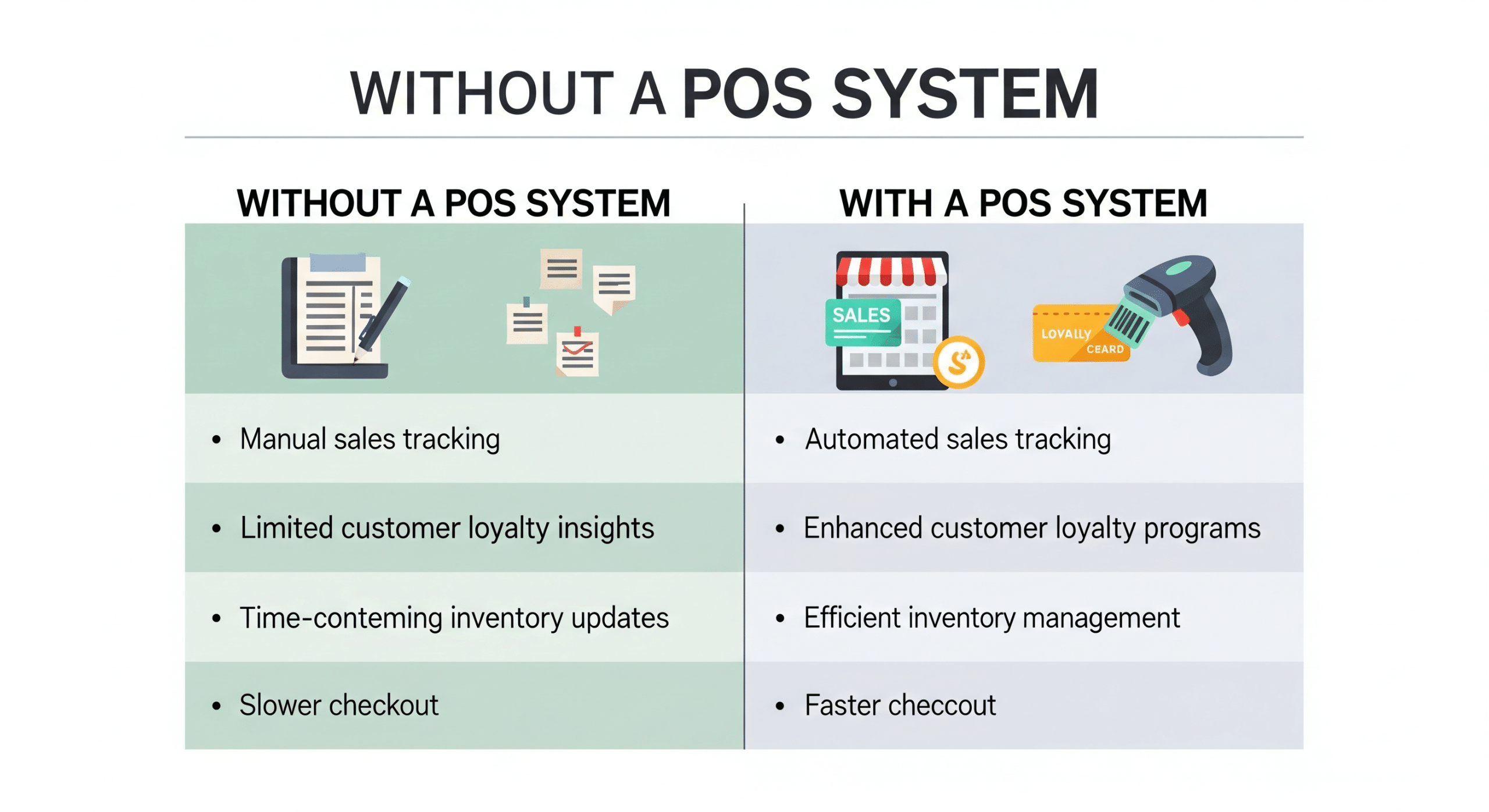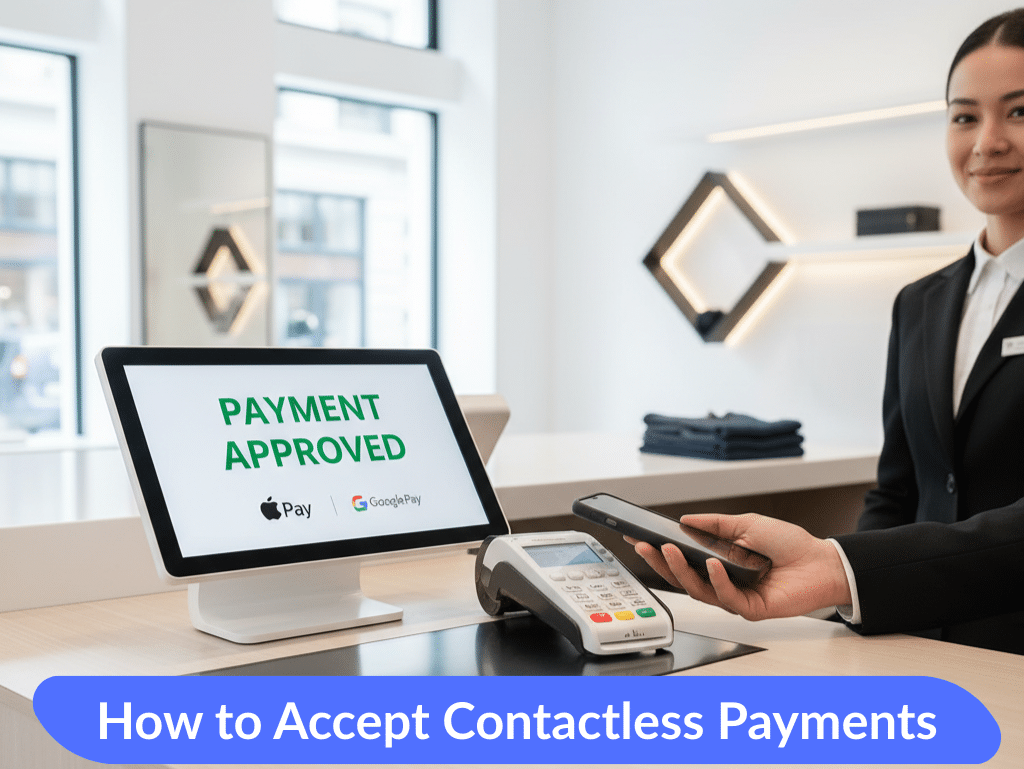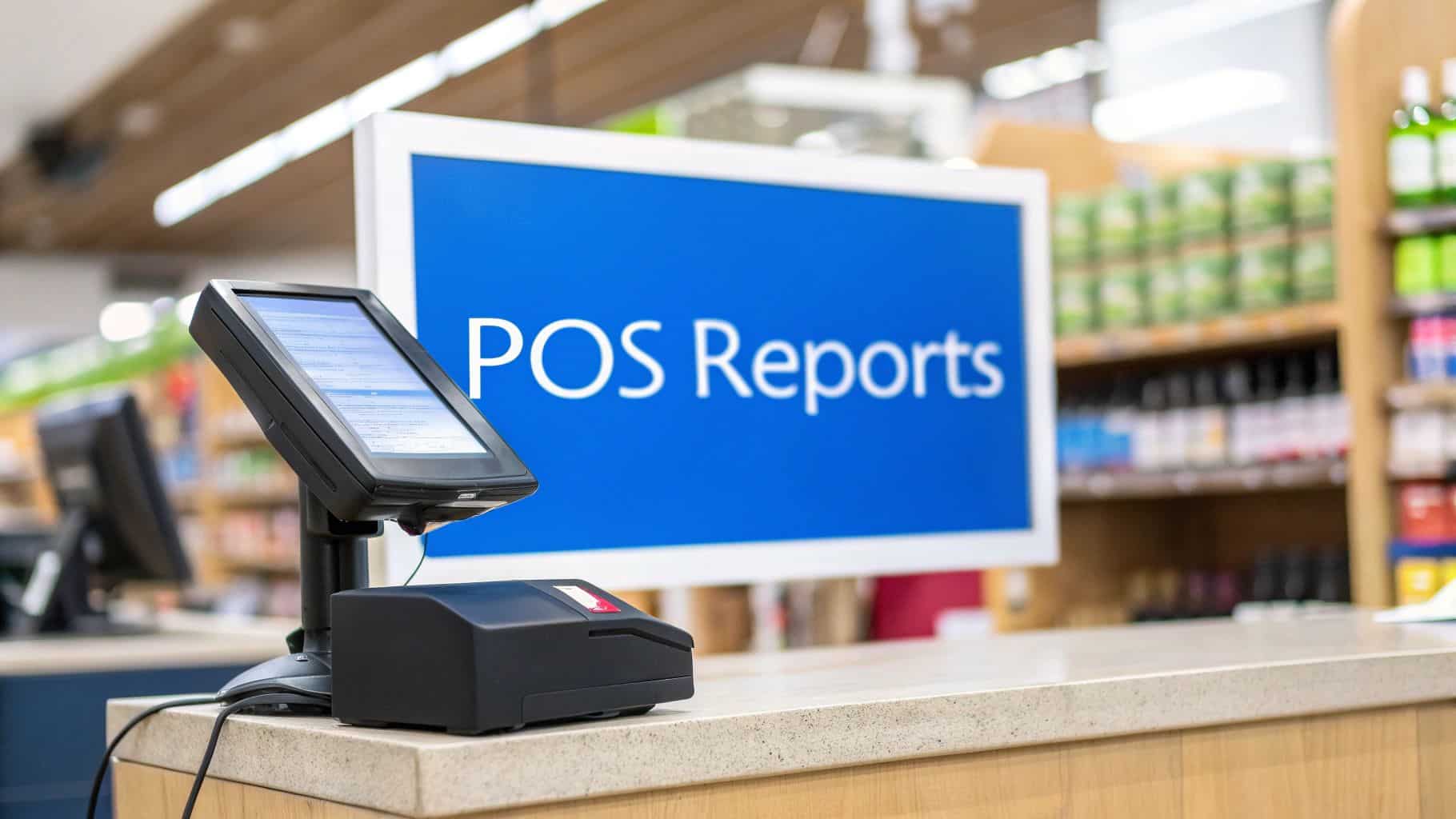A modern boutique needs more than just stylish products and a beautiful storefront. To thrive in today’s competitive retail market, boutique owners require efficient tools to manage sales, inventory, and customer relationships. That’s where a POS system for boutique retail comes in. Designed specifically for small fashion stores, apparel shops, and lifestyle retailers, a boutique-focused POS system simplifies everyday operations while enhancing the customer shopping experience. From inventory tracking and barcode scanning to mobile POS support and CRM integration, these systems help boutiques operate like well-oiled machines.
Table of Contents
- Smart Inventory Management for Boutiques
- Building Loyalty Through Customer Management
- Sales Reporting and Real-Time Analytics
- E-Commerce Integration and Payment Processing
- Enhancing Staff Efficiency with Boutique POS Tools
- Why Choose Biyo POS for Your Boutique?
- Frequently Asked Questions
Smart Inventory Management for Boutiques
Managing inventory in a boutique retail setting is one of the most critical tasks. Unlike large department stores, boutiques often carry limited-edition pieces, seasonal collections, and unique designs. A POS system for boutique retail ensures you always know what’s in stock, what’s selling fast, and what needs reordering.
Real-Time Inventory Tracking
With real-time inventory tracking, boutique owners gain complete visibility into their stock levels. Every sale updates automatically, preventing errors and eliminating the guesswork that often comes with manual tracking. For instance, if you sell a popular dress, the system immediately updates the quantity so you don’t oversell. This prevents unhappy customers and keeps your brand reputation intact.
Real-time updates also allow managers to spot bestsellers quickly. If a particular product is moving fast, the boutique can restock before running out. This not only improves sales but also keeps customers happy by ensuring their favorite items are always available. Small fashion retailers benefit because they can act fast without spending hours counting items manually.
Moreover, real-time inventory helps boutiques reduce waste. Fashion items are often seasonal, so overstocking can lead to unsold merchandise. A POS system for boutique retail helps predict demand and align orders with sales trends. As a result, stores maintain optimal inventory levels that maximize profit while reducing losses.
Barcode Scanning and Stock Alerts
Barcode scanning makes checking out fast and efficient. Employees can scan tags instead of manually entering prices, which reduces errors and speeds up transactions. Customers appreciate faster service, and staff can focus more on customer engagement rather than typing in codes. For a boutique with high foot traffic, this can be a game-changer.
Stock alerts are another key feature. The system notifies you when inventory runs low, so you never miss a chance to restock. Imagine a best-selling handbag running out unexpectedly—your boutique could lose revenue and disappoint regular customers. With automated alerts, you can stay proactive and reorder before stockouts occur.
Furthermore, stock alerts prevent overbuying. Instead of relying on intuition, boutique owners receive system-generated recommendations. This balance ensures you maintain enough supply to meet demand without tying up cash in unsold items. As a result, financial planning becomes easier and more predictable.
Inventory Forecasting with Real-Time Analytics
Inventory forecasting allows boutique owners to predict future demand based on past sales. A POS system for boutique retail analyzes purchase patterns, helping managers identify peak seasons and hot-selling categories. For example, if floral dresses sell out every spring, the system will suggest increasing stock ahead of time.
This proactive approach helps boutiques prepare without overspending. Forecasting reduces guesswork and minimizes financial risks. Boutique managers can plan smarter by knowing exactly how much to order and when to reorder. This strengthens their ability to compete with larger retailers that rely heavily on analytics.
In addition, forecasting ties directly into marketing. If your system predicts high sales of a certain product, you can align promotions to boost awareness. This not only increases revenue but also ensures campaigns are data-driven, making them more effective. Small boutiques, in particular, benefit from aligning inventory with targeted promotions.

Building Loyalty Through Customer Management
Customers are the heart of every boutique. Unlike big-box stores, boutique retail thrives on repeat buyers and personal connections. A POS system for boutique retail includes features that strengthen these relationships through loyalty programs, CRM integration, and personalized shopping experiences.
Customer Loyalty Programs
Loyalty programs encourage repeat purchases by rewarding shoppers for their loyalty. A boutique POS can track points, discounts, or rewards automatically. This simplifies management while giving customers reasons to come back. For example, after five purchases, customers may receive a discount or a free gift. Such incentives boost engagement and brand loyalty.
Loyalty programs also create emotional connections. Customers feel valued when their favorite boutique recognizes their loyalty. This strengthens long-term relationships, making buyers less likely to switch to competitors. A well-structured reward system not only improves sales but also builds trust in your brand.
From a financial perspective, retaining customers is more cost-effective than acquiring new ones. A POS system for boutique retail provides tools to track and reward loyalty seamlessly, ensuring boutiques spend wisely on customer acquisition and retention.
Customer Database and CRM Integration
A customer database is more than just a contact list. It stores purchase history, preferences, and personal details that help boutiques deliver personalized experiences. For example, if a customer regularly buys handbags, the system can suggest new arrivals or offer discounts in that category. This targeted approach increases the chance of repeat sales.
CRM integration allows boutiques to manage this data efficiently. By syncing with CRM software, boutiques can run targeted email campaigns, send birthday discounts, and even provide style recommendations. This personalized attention turns casual shoppers into loyal brand advocates. In today’s competitive landscape, that personal touch makes a huge difference.
For boutique staff, having access to customer data improves service quality. Sales associates can greet customers by name, recommend relevant products, and ensure they feel valued. This not only increases sales but also creates memorable shopping experiences that customers will share with friends and family.
Gift Cards and Discount Management
Gift cards are powerful tools for driving revenue. Customers often purchase them as gifts, which introduces new buyers to the boutique. A POS system for boutique retail makes it easy to issue, redeem, and track gift cards seamlessly. This increases cash flow while expanding your customer base.
Discount management also plays a key role. Instead of manually applying discounts, the system automates the process and ensures accuracy. For example, seasonal promotions or buy-one-get-one offers can be set up in advance. This saves staff time and ensures consistent pricing across all transactions.
When combined, gift cards and discounts create an appealing strategy to attract both new and returning customers. They enhance shopping experiences while ensuring boutiques maintain profitability through controlled and data-driven promotions.
Sales Reporting and Real-Time Analytics
Data is the secret weapon of successful boutiques. Without insights, retailers may miss growth opportunities or struggle to control costs. A POS system for boutique retail provides robust sales reporting and real-time analytics to keep owners in control of their businesses.
Comprehensive Sales Reporting
Sales reporting goes beyond daily totals. A boutique POS generates detailed reports on bestsellers, seasonal trends, and employee performance. These insights show what products resonate most with customers. For instance, if denim jackets consistently outperform other products, managers can allocate more budget to expand that line.
Accurate reporting also helps identify weak spots. If certain items don’t sell, boutiques can adjust pricing or launch promotions to move inventory. These small adjustments prevent losses and improve profitability. By tracking patterns, managers can make informed decisions rather than relying solely on instinct.
With automated reporting, boutique owners save hours of manual work. They can focus more on customer interactions while still keeping a pulse on financial performance. This balance between insight and efficiency is essential for long-term growth.
Real-Time Analytics for Smarter Decisions
Real-time analytics empower boutique owners to respond instantly to sales trends. For example, if a new clothing line starts selling rapidly, the system shows the spike in real time. This allows managers to reorder quickly and maximize revenue before demand slows. Instead of waiting for end-of-month reports, boutique owners stay agile and responsive.
Analytics also highlight customer buying behavior. If customers often buy accessories with certain outfits, boutiques can create bundled promotions. These insights help retailers increase average transaction values while delivering a better shopping experience. Knowing what customers want and when they want it is the foundation of successful retail management.
In addition, real-time analytics provide visibility across all sales channels. For boutiques with both physical and online stores, integrated reporting ensures data consistency. Owners can compare in-store performance with e-commerce results to understand their complete business picture. This integration is key for growth in an omnichannel retail environment.
Forecasting Sales Trends
Forecasting helps boutiques prepare for seasonal changes and customer preferences. A POS system for boutique retail uses past sales data to predict future performance. For instance, if summer dresses outsell other categories during June, the system will forecast a similar trend for the next year. This ensures boutiques stock enough products ahead of time.
Accurate forecasting reduces financial risks. Instead of overbuying or underbuying, boutiques can strike the right balance. This control prevents unnecessary markdowns and keeps profit margins intact. Managers who rely on forecasts also gain confidence in making long-term decisions, such as expanding product lines or opening new locations.
Forecasting also helps with staffing. By predicting busy seasons, boutiques can schedule employees accordingly. This improves customer service during peak times and prevents overstaffing during slower periods. A well-staffed boutique creates a smoother shopping experience that boosts customer satisfaction.
E-Commerce Integration and Payment Processing
Today’s customers expect flexibility. Many boutiques not only sell in-store but also run online shops to reach wider audiences. A POS system for boutique retail with strong e-commerce integration ensures seamless operations across channels. At the same time, robust payment processing creates secure and convenient checkout experiences.
Seamless E-Commerce Integration
E-commerce integration allows boutiques to manage both online and offline sales from one platform. Inventory updates in real time, ensuring that products sold online are reflected instantly in the store database. This prevents overselling and keeps customer trust intact. Boutique owners no longer need to reconcile two separate systems manually.
Integration also simplifies order fulfillment. When an online order comes in, the system automatically updates sales reports, deducts inventory, and even prints receipts if required. This reduces staff workload and eliminates errors that come from handling separate platforms. As a result, boutiques can focus more on marketing and less on operational headaches.
Moreover, having one unified system provides customers with a consistent shopping experience. Whether they shop online or in-store, customers enjoy the same product availability, loyalty rewards, and discounts. This unified approach strengthens the brand’s reputation and increases overall customer satisfaction.
Flexible Payment Processing
Modern shoppers expect convenience when it comes to payment. A POS system for boutique retail supports multiple payment options, including credit cards, debit cards, mobile wallets, and contactless payments. Offering flexibility ensures that customers complete their purchases without hesitation. The easier the checkout, the more likely customers are to return.
Payment processing also improves security. Advanced POS systems include encryption and fraud prevention tools, giving customers peace of mind. Boutique owners benefit from faster deposits and reliable transaction records that keep their accounting accurate. This creates a strong foundation for financial management and compliance.
Additionally, mobile POS devices make payments more flexible. Staff can complete transactions anywhere in the boutique, whether at the fitting room or during pop-up events. This mobility creates a personalized shopping experience and eliminates long checkout lines, keeping customers happy and engaged.
Omnichannel Retail Experience
An omnichannel retail experience connects every customer touchpoint. Customers can browse products online, reserve items, and pick them up in-store without disruption. A POS system for boutique retail ensures that inventory, payments, and loyalty points sync across all channels. This consistency builds customer trust and loyalty.
Omnichannel strategies also provide valuable data. By analyzing both online and offline transactions, boutiques gain a complete view of their customers’ shopping habits. This information helps tailor promotions and product offerings to match customer needs. For example, online shoppers may prefer seasonal collections, while in-store buyers may focus on accessories.
Finally, omnichannel features make boutiques more competitive. Large retailers already leverage these strategies, but with a boutique-focused POS system, smaller stores can offer the same seamless experiences. This levels the playing field and helps boutiques attract modern, tech-savvy shoppers.
Enhancing Staff Efficiency with Boutique POS Tools
Behind every great boutique is a dedicated team. A POS system for boutique retail supports staff by streamlining their tasks, making them more efficient, and improving customer service. From employee management to customizable interfaces, these tools create a smooth workflow for daily operations.
Employee Management and Performance Tracking
Employee management features allow boutique owners to track staff performance with ease. Each sale can be linked to a specific employee, helping managers identify top performers. This creates opportunities for incentives, which motivate staff to provide better service. Recognition and rewards boost morale and reduce turnover in the long run.
Performance tracking also highlights training needs. If some employees struggle with upselling, managers can provide targeted coaching. This improves both staff confidence and customer satisfaction. A well-trained team enhances the overall shopping experience and drives repeat business.
Additionally, employee management tools help with scheduling. Boutiques can plan shifts based on peak hours, ensuring the store is always staffed appropriately. This prevents burnout among employees while also maintaining consistent service quality for customers.
Customizable Interface for Faster Operations
A customizable interface ensures that staff can work quickly without confusion. Buttons, menus, and product categories can be arranged according to the boutique’s unique needs. This eliminates unnecessary clicks and speeds up checkout. Employees spend less time navigating the system and more time engaging with customers.
Customization also reduces errors. By tailoring the interface to match store operations, staff find it easier to apply discounts, check inventory, or process returns. For example, a fashion boutique may place top-selling categories like dresses and accessories at the front of the screen for easy access. This reduces mistakes during busy hours.
For new employees, a simple and intuitive interface shortens training time. Staff can learn the system quickly and start serving customers effectively. This reduces onboarding costs and ensures a smoother transition during staff changes.
Mobile POS for On-the-Go Service
Mobile POS systems allow employees to serve customers anywhere in the store. Staff can check inventory, apply discounts, or complete payments without sending customers to a central counter. This creates a personalized shopping experience where customers feel valued and attended to instantly.
Mobile POS also improves efficiency during busy seasons or in crowded stores. Staff can move around with tablets or smartphones, reducing checkout wait times. Customers appreciate this flexibility and are more likely to return for future purchases. In fact, many boutiques see an increase in sales simply by making checkout faster and easier.
Finally, mobile POS tools are perfect for events. Pop-up shops, fashion fairs, or outdoor sales become easier to manage because transactions sync directly with the boutique’s main system. This ensures consistent inventory management and reporting, regardless of where sales take place.

Why Choose Biyo POS for Your Boutique?
If you’re looking for a reliable POS system for boutique retail, Biyo POS is designed with your needs in mind. It combines smart inventory tracking, flexible payment processing, and powerful customer management tools. Boutiques benefit from real-time analytics, seamless e-commerce integration, and mobile POS capabilities that deliver top-notch service anywhere.
With features like loyalty programs, CRM integration, employee performance tracking, and customizable dashboards, Biyo POS helps boutiques thrive in today’s competitive retail environment. Whether you run a single store or manage multiple locations, Biyo POS adapts to your unique workflow and keeps your business growing. Its cloud-based platform ensures that your data is always accessible, secure, and up to date.
By choosing Biyo POS, boutique owners gain more than just software—they gain a partner committed to helping their business succeed. With intuitive tools and excellent support, Biyo POS empowers you to focus on what matters most: delighting your customers and building a strong, profitable brand.
Frequently Asked Questions
What is the best POS system for boutique retail?
The best POS system for boutique retail is one that combines inventory management, sales reporting, customer loyalty tools, and payment processing in a single platform. Solutions like Biyo POS are designed specifically for boutiques, offering tailored features that simplify operations while improving customer engagement.
How does a POS system help boutique inventory management?
A POS system for boutique retail tracks stock in real time, generates alerts for low inventory, and provides forecasting tools to prevent overstocking. This ensures boutiques always have the right products available while reducing waste and improving profitability.
Can I integrate my boutique POS with an online store?
Yes, modern POS systems include e-commerce integration. This allows you to sync inventory, sales, and customer data between your online shop and physical boutique. It prevents overselling and creates a seamless shopping experience for customers across channels.
Do boutique POS systems support mobile payments?
Absolutely. Mobile POS features allow staff to accept payments from anywhere in the store or at off-site events. Customers enjoy faster service, while boutiques benefit from flexible and secure payment options that increase sales opportunities.
Is Biyo POS suitable for small boutique stores?
Yes. Biyo POS is ideal for small boutiques because it is affordable, cloud-based, and easy to use. It includes features like loyalty programs, mobile POS, and real-time analytics, making it perfect for independent retailers looking to scale their operations efficiently.




